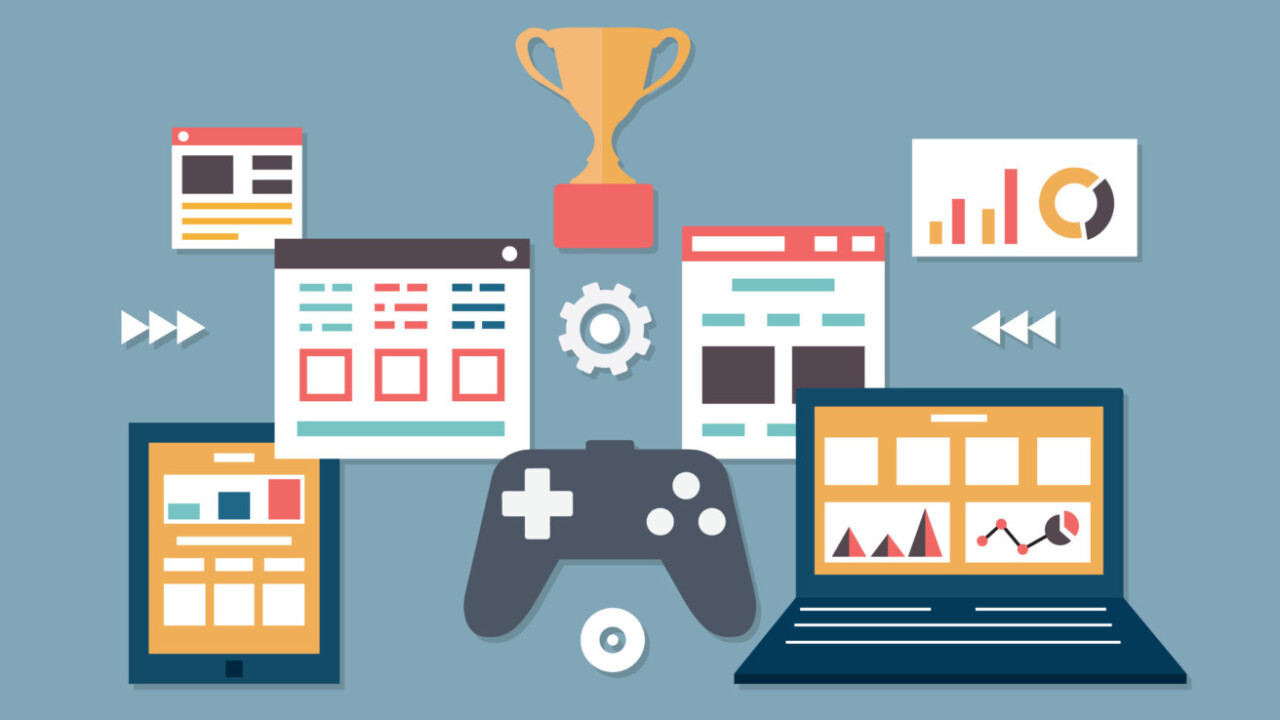
Familiar with technology and often obsessive about their phones, millennials are likely one of your top demographics to target. One way to grab — and keep — their attention is to gamify your product or app, making the experience fun to keep them engaged.
To learn how best to do this, I asked 12 young entrepreneurs from YEC the following:
How can companies incorporate gamification into their products to appeal to millennials?
Their best answers are below:
1. Design for delight
 We can deconstruct gaming functionality, check all the boxes, and still not appeal to the elusive millennial. True engagement results from identifying and fulfilling an emotional need, and designing a user experience that is not just rewarded by points and social status, but one that is pleasurable, delightful and intrinsically rewarding. – Devanshi Garg, Icreon
We can deconstruct gaming functionality, check all the boxes, and still not appeal to the elusive millennial. True engagement results from identifying and fulfilling an emotional need, and designing a user experience that is not just rewarded by points and social status, but one that is pleasurable, delightful and intrinsically rewarding. – Devanshi Garg, Icreon
2. Give them instant gratification
 One of the most important behavioral drivers for millennials is instant gratification. They don’t like to wait and they don’t like anything that’s ambiguous. Use simple progress update bars to let them know how close they are to finishing. Reward them with a quick sign-up experience, then gate some of the other features, unlocking them only after users preform more tasks. – Andy Karuza, FenSens
One of the most important behavioral drivers for millennials is instant gratification. They don’t like to wait and they don’t like anything that’s ambiguous. Use simple progress update bars to let them know how close they are to finishing. Reward them with a quick sign-up experience, then gate some of the other features, unlocking them only after users preform more tasks. – Andy Karuza, FenSens
3. Incorporate cause-focused social media contests
 Millennials are concerned about various things, from social justice to the environment. Use that interest to create contests around your products that raise money for a cause for every purchase they make from your company. The person who raises the most funds for the cause can get something of value, perhaps dinner for two at a nice restaurant or a prepaid Visa card. – Nicole Munoz, Start Ranking Now
Millennials are concerned about various things, from social justice to the environment. Use that interest to create contests around your products that raise money for a cause for every purchase they make from your company. The person who raises the most funds for the cause can get something of value, perhaps dinner for two at a nice restaurant or a prepaid Visa card. – Nicole Munoz, Start Ranking Now
4. Gamify information gathering
 Often, the desire to include gamification can be distracting if it’s a separate addition to the core user journey. Find the essential information you need from users and make that process a game. For examples, surveys can be turned into graphical interfaces versus typing information out. Gamification can be employed to make users feel that they are achieving a goal rather than doing cores. – Eran Eyal, StartupHat
Often, the desire to include gamification can be distracting if it’s a separate addition to the core user journey. Find the essential information you need from users and make that process a game. For examples, surveys can be turned into graphical interfaces versus typing information out. Gamification can be employed to make users feel that they are achieving a goal rather than doing cores. – Eran Eyal, StartupHat
5. Gamify security
 It’s difficult to make users care about security. Many won’t choose secure passwords or act to keep their data safe. One way of increasing the chances they’ll create secure passwords is to gamify account creation by scoring passwords and letting users get a higher score by choosing better passwords. Users will then choose secure passwords and develop an understanding of what a secure password looks like. – Vik Patel, Future Hosting
It’s difficult to make users care about security. Many won’t choose secure passwords or act to keep their data safe. One way of increasing the chances they’ll create secure passwords is to gamify account creation by scoring passwords and letting users get a higher score by choosing better passwords. Users will then choose secure passwords and develop an understanding of what a secure password looks like. – Vik Patel, Future Hosting
6. Make it competitive
 A leaderboard can be applied to a wide variety of products and can create a sense of competition between users. Ask your customers to track a certain metric related to the product and rank them. They’ll all try to outrank each other. – Andrew Namminga, Andesign
A leaderboard can be applied to a wide variety of products and can create a sense of competition between users. Ask your customers to track a certain metric related to the product and rank them. They’ll all try to outrank each other. – Andrew Namminga, Andesign
7. Make the incentive worth their time
 Make sure the incentive is one your audience actually wants. A t-shirt for a product no one has an affinity for is going to bring results as bad as the prize itself. The same will happen if you have complicated rules or lots of effort is required, particularly if no one knows who you are yet. Ipsy does a great job with this — it gives points for each social share and referral that you can then use to go shopping on their site. – Kim Walsh-Phillips, Elite Digital Group
Make sure the incentive is one your audience actually wants. A t-shirt for a product no one has an affinity for is going to bring results as bad as the prize itself. The same will happen if you have complicated rules or lots of effort is required, particularly if no one knows who you are yet. Ipsy does a great job with this — it gives points for each social share and referral that you can then use to go shopping on their site. – Kim Walsh-Phillips, Elite Digital Group
8. Add milestones
 Make it worth it to spend money. Southwest and Chase hit the nail on the head when is comes to gamification. A list status, the buddy pass and their point system are all there to create milestones to get preferred status and free flights by spending and flying. This is a model that has the millennial generation purchasing everything they possibly can on their southwest credit card. – Hillary Hobson, Highest Cash Offer
Make it worth it to spend money. Southwest and Chase hit the nail on the head when is comes to gamification. A list status, the buddy pass and their point system are all there to create milestones to get preferred status and free flights by spending and flying. This is a model that has the millennial generation purchasing everything they possibly can on their southwest credit card. – Hillary Hobson, Highest Cash Offer
9. Hold contests and giveaways
 We use contests and giveaways to create excitement and grow our market. We create a unique giveaway with our leggings and another company’s product. People sign up to win through our post on Instagram and immediately get a discount code. To win, contestants must complete promotional activities, like tagging friends or liking a quote. We offer these contests once a month and our customers love them. – Ashley Ferraro, Dona Jo, Inc.
We use contests and giveaways to create excitement and grow our market. We create a unique giveaway with our leggings and another company’s product. People sign up to win through our post on Instagram and immediately get a discount code. To win, contestants must complete promotional activities, like tagging friends or liking a quote. We offer these contests once a month and our customers love them. – Ashley Ferraro, Dona Jo, Inc.
10. Make the product itself a game
 Millennials love games. We grew up playing Super Mario Brothers and taking Game Boys with us everywhere. With smartphones, almost anything can be gamified. Case-in-point: Whether or not it was their intention, Pokemon found a way to get people to exercise by using augmented reality. With a little ingenuity, the most mundane things can be turned into interactive games. Therein lies the secret. – Brayden Olson, Recurrence, Inc
Millennials love games. We grew up playing Super Mario Brothers and taking Game Boys with us everywhere. With smartphones, almost anything can be gamified. Case-in-point: Whether or not it was their intention, Pokemon found a way to get people to exercise by using augmented reality. With a little ingenuity, the most mundane things can be turned into interactive games. Therein lies the secret. – Brayden Olson, Recurrence, Inc
11. Incorporate “Easter eggs” into your product
 Companies can increase millennial engagement by adding surprising “Easter Eggs” — hidden joke, messages, or features — in their product for users to discover. Snapchat is excellent at incorporating special badges and features for users who take the time to find them. – Adelyn Zhou, TOPBOTS
Companies can increase millennial engagement by adding surprising “Easter Eggs” — hidden joke, messages, or features — in their product for users to discover. Snapchat is excellent at incorporating special badges and features for users who take the time to find them. – Adelyn Zhou, TOPBOTS
12. Implement shareable content
 When it comes to gamification and reaching millennials, few things work better than shareable content and incentivization. The shareable content is key because it brings a whole new viral aspect to the product and the marketing of it, while the incentivization/rewards allows the end user to feel appreciated and so they want to participate more. Both of these factors were key in mobile gaming growth. – Zac Johnson, Blogger
When it comes to gamification and reaching millennials, few things work better than shareable content and incentivization. The shareable content is key because it brings a whole new viral aspect to the product and the marketing of it, while the incentivization/rewards allows the end user to feel appreciated and so they want to participate more. Both of these factors were key in mobile gaming growth. – Zac Johnson, Blogger
Get the TNW newsletter
Get the most important tech news in your inbox each week.




